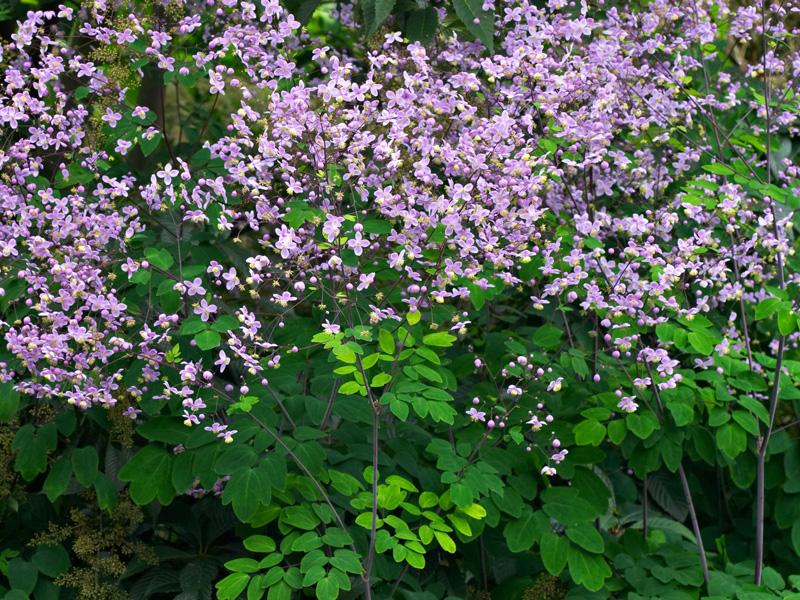About Thalictrums- The Meadow Rues
Meadow rues are members of the family Ranunculaceae, which includes other distinctive perennials such as columbines, delphiniums, buttercups, anemones and hellebores. The common name comes from the leaves resembling those of the common rue, Ruta graveolens. Easy to grow, plants thrive in moist, humusy soils in part shade to full sun. The numerous small flowers are borne in cushions of white, soft yellow, lavender to pink that seem to drift like clouds. The lacy foliage is very similar to those of columbines, with deep green to steel blue tones. This unique combination makes meadow rues some of the more dazzling plants for the woodland.
How to Care for your Meadow Rues
Try to plant your meadow rues as soon as possible. These are adaptable and will have no problem acclimating to your growing area. Be sure to keep the soil moist to the touch if you do not transplant immediately. Protect from strong winds and drying out before planting.
Where do I plant my meadow rues?
Plant low-growing species such as T. ichangense where these can compete well with other perennials. Taller varieties are best in the back border, where some may need staking. Meadow rues thrive well among Ligularia, Rodgersia, and ferns. Chelones, daylilies, phloxes, and tall grasses are also good companion plants. Avoid garden spots with direct hot sun exposure and strong winds. Plant in well-drained areas with steady soil moisture.
How do I plant my meadow rues?
Dig a hole that is twice as wide and deep as the container the plant is in. Work this soil well and incorporate a balanced, slow-release fertilizer into the planting hole. Backfill the hole and set the plant even with ground level, firming the soil around it. Water in very well, making sure that the roots are in contact with the soil. While plants are getting established in the garden, water as needed.
What should I do in order to have my meadow rues increase in beauty from year to year?
Prune plants back after flowering, to rejuvenate foliage and plant growth. Apply mulch to help conserve water and keep down weeds. Powdery mildew can become a problem with poor air circulation and overhead watering. Mark where plants are located; shoots emerge late in the spring and could get smothered by weeds.

